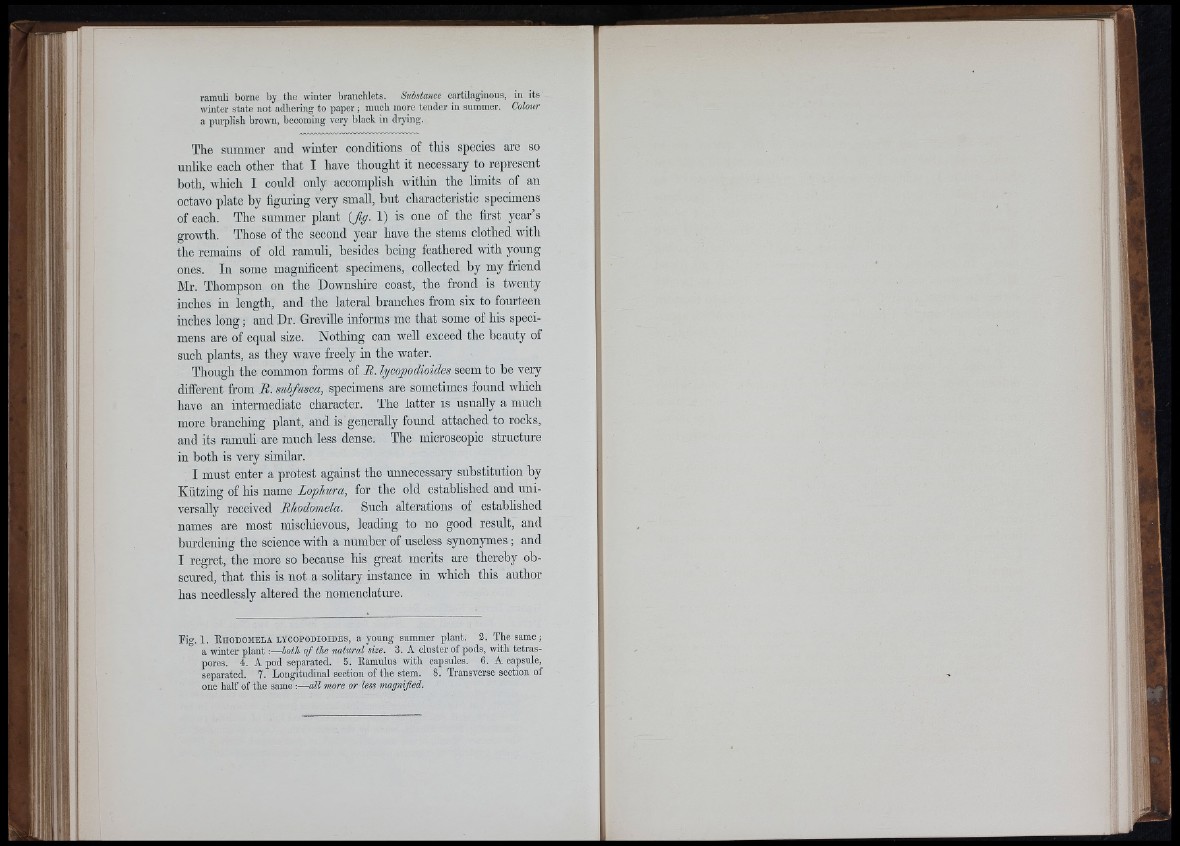
ramuli borne by tlie winter branchlets. Suhstanae cartilaginous, in its
winter state not adhering to paper; much more tender in summer. Colour
a pm-plish brown, becoming very black in drying.
The summer and winter conditions of this species are so
unlike each other that I have thought it necessary to represent
both, which I could only accomplish within the limits of an
octavo plate by figuring very small, but characteristic specimens
of each. The summer plant {fig. 1) is one of the first year’s
growth. Those of the second year have the stems clothed with
the remains of old ramuli, besides being feathered with young
ones. In some magnificent specimens, collected by my friend
Mr. Thompson on the Downshire coast, the frond is twenty
inches in length, and the lateral branches from six to fourteen
inches long; and Dr. Greville informs me that some of his specimens
are of equal size. Nothing can well exceed the beauty of
such plants, as they wave freely in the water.
Though the common forms of B. lycopodioides seem to be very
different from B. subfusca, specimens are sometimes found which
have an intermediate character. The latter is usually a much
more branching plant, and is generally found attached to rocks,
and its ramuli are much less dense. The microscopic structure
in both is very similar.
I must enter a protest against the unnecessary substitution by
Kützing of his name Lophura, for the old established and universally
received Bhodomela. Such alterations of established
names are most mischievous, leading to no good result, and
burdening the science with a number of useless synonymes; and
I regret, the more so because his great merits are thereby obscured,
that this is not a solitary instance in which this author
has needlessly altered the nomenclature.
Fig. 1. E h o d om e l a l y c o p o d io id e s , a young summer plant. 3. The same ;
a winter plant :— both o f the natural size. 3. A cluster of pods, with tetraspores.
4. A pod separated. 5. Eamulus with capsules. 6. A capsule,
separated. 7. Longitudinal section of the stem. 8. Transverse section of
one half of the same :— all more or less magnified.